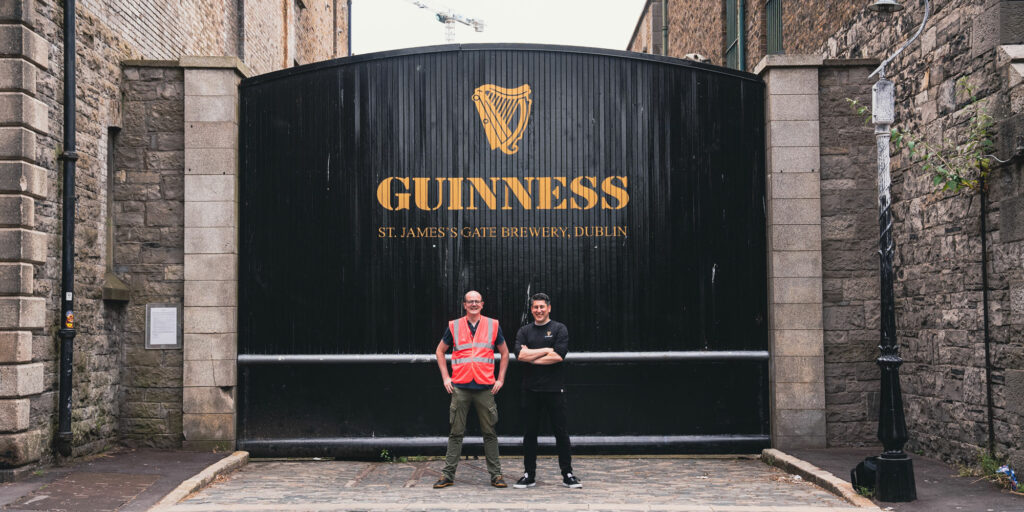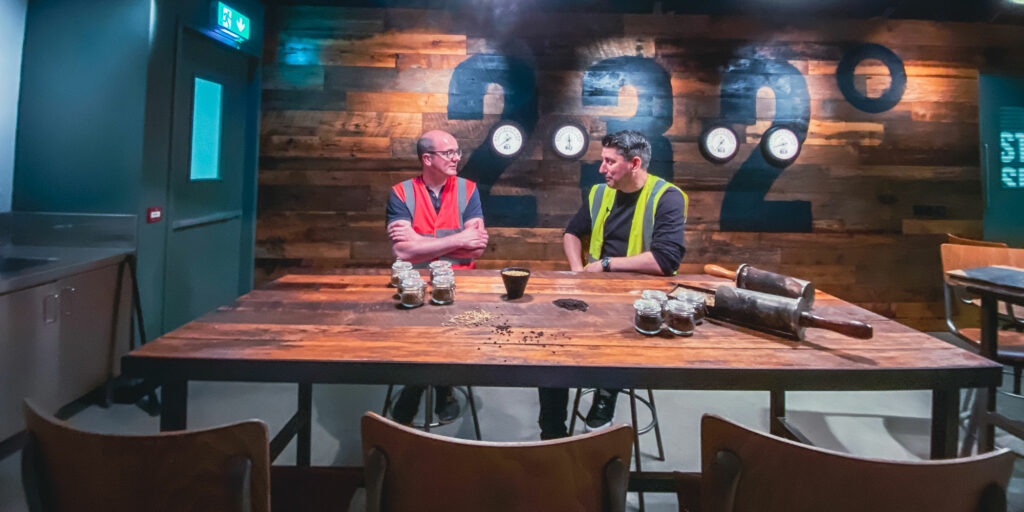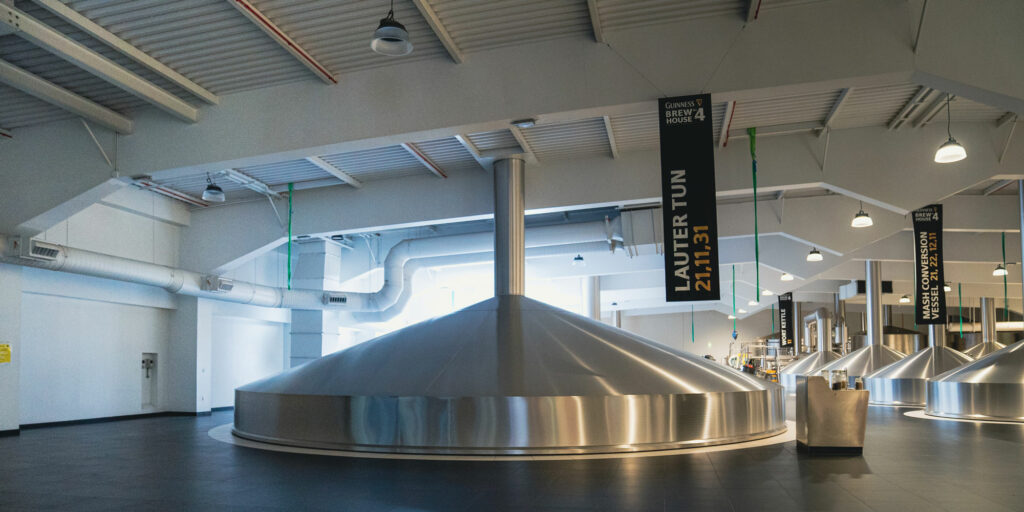A Guinness Clone recipe is a request we receive at Geterbrewed frequently. So when we chatted to Guinness about doing a brewery tour, we wanted to get you some real tips direct from St James Gate.

The volume of Guinness draft consumed daily is mind-blowing. So, of course, it will be popular to create a Guinness Clone Recipe for the homebrewing community. Here comes the exclusive…
We were lucky to be invited behind the gates at St James Gates to see the production facility. The site is 60 acres, and it’s a beer factory producing some 27 pints every second. St James Gate produces all the draft beer for US, EU & UK. Given that 1 in every 10 pints consumed in London is now a Guinness and the consumption growth is at record levels, you would have thought we knew what to expect. We were blown away at the scale of production! We have to say the team at Guinness made us feel very welcome. It was a great experience, and we met some lovely folk.
Recipe Tips
The unique thing with Guinness is twofold. They roast their own barley and have a unique strain of yeast. The base malt recipe is 90% Pale Ale and 10% roast barley. They only use a bittering hop addition, a blend of European noble varieties. The IBU’s that your aiming for is 45. Use an online recipe calculator to calculate 45 IBUs of bittering for your batch size.

The yeast that Guinness use is a closely guarded secret. They suggested we should recommend a neutral clean ale yeast. I think, having seen the operation’s scale, a Kviek strain would work perfectly. It can ferment at high temperatures and produce a clean, neutral flavour profile. Kviek yeasts ferment at incredible speed. Given the pace we observed at Guinness on the tour, we feel it could be a good option for your Guinness Clone Recipe.
For the 90% Base Malt, we would recommend Crisp Best Ale. For the Roast Barley, we would recommend Crisp Roasted Barley or Dingemans Peeled Roasted Barley. In terms of abv and starting and finishing gravity, you’re waiting to hit 4.2% abv with a finishing gravity of 1008. Again your batch size and recipe calculator will help you hit these parameters.
To truly replicate the Guinness Draft at home, you will need to dispense using a mixed gas of Nitrogen & Co2.
Now, these are merely guidelines. There are some great clone recipes out there. However, this advice is from the horse’s mouth. We will work on getting a kit up on our website, but this deserves some testing to get it right.

Watch our Behind the Gates Guinness Tour here